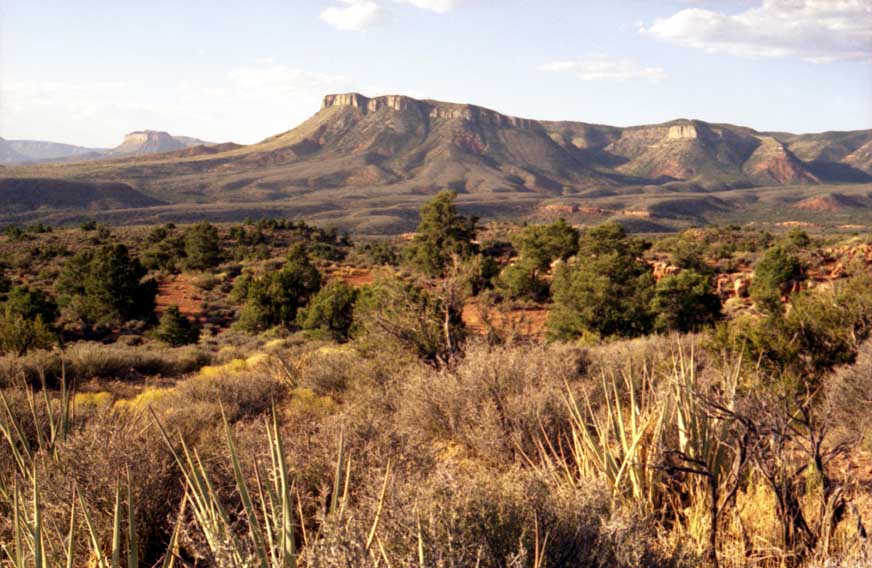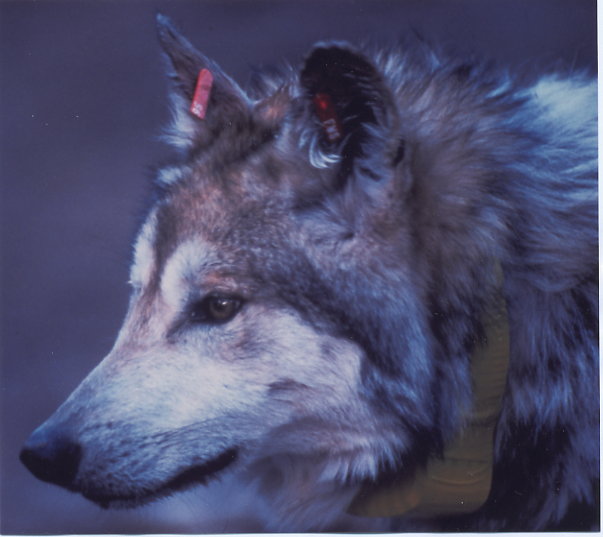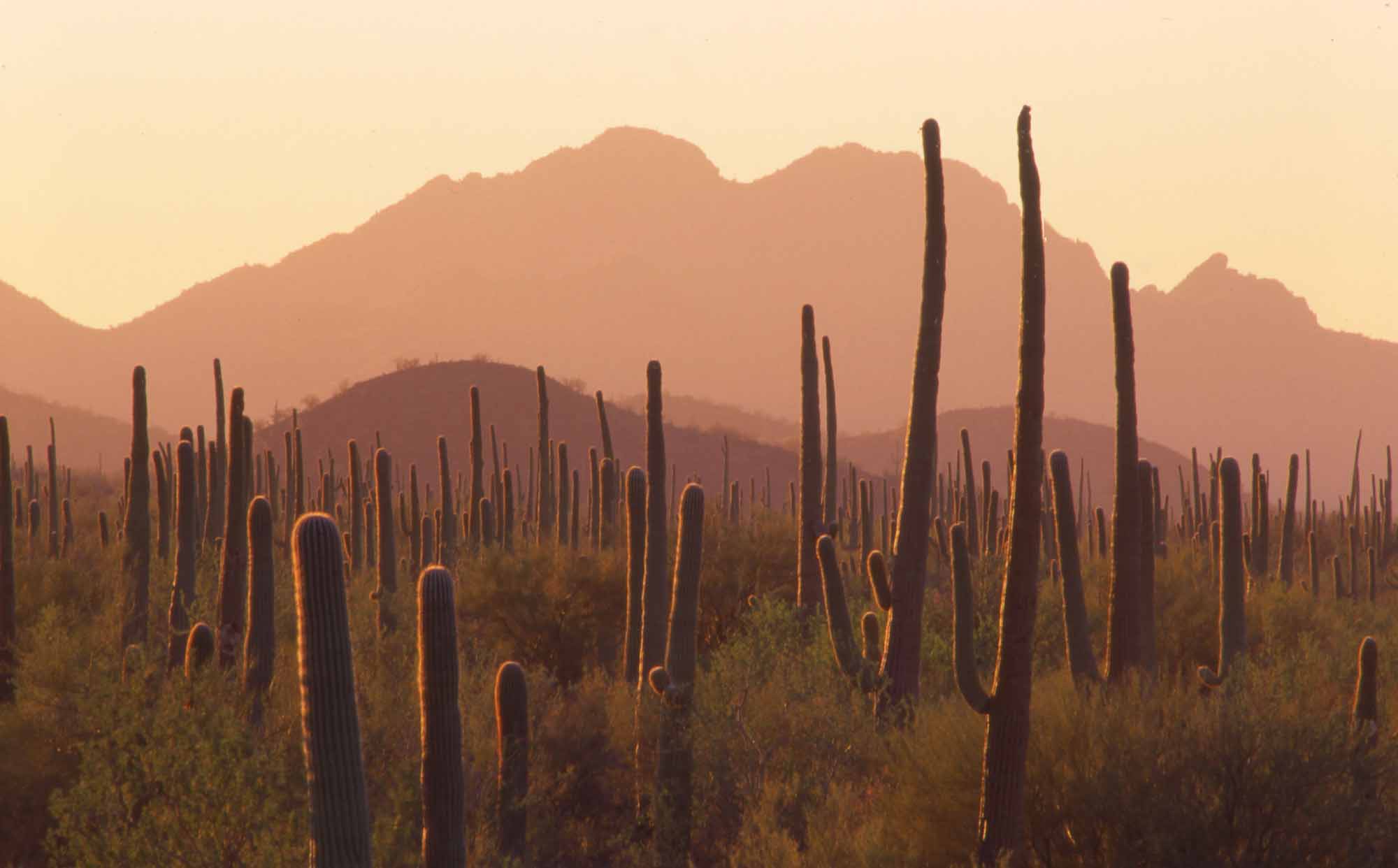Short Takes
Seedy Nightclub? Hardly.
The
Arizona Strip sounds like a popular watering hole for Phoenix’s morally
corrupt crowd. It’s anything but, and has citizens all around the state
rallying for wilderness. AWC is launching an ambitious initiative to
set aside approximately 950,000 acres of additional wilderness along
the Arizona Strip north of Grand Canyon National Park, including Vermilion
Cliffs and Grand Canyon-Parashant National Monuments. A kickoff concert
will celebrate the citizens' proposal for the Strip (see below).
As
a result of citizen volunteer inventory efforts, the Arizona Wilderness
Coalition (AWC) is presenting this wilderness proposal to the Bureau
of Land Management (BLM) as part of the agency’s public process for
how to manage the Arizona Strip and its distinct units. AWC’s Citizen’s
Wilderness Proposal provides thorough documentation on the Strip’s requisite
wilderness characteristics, including
species diversity, remoteness, access issues, watershed features, and
geological characteristics. Public meetings on the BLM’s alternatives
for the Strip begin in June.
Come out and support the Citizens’ Proposal!

Grand Cliffs, Arizona Strip. Photo by Kim Crumbo.
All
meetings will be from 4-6 pm, Mountain Standard time, except where noted.
Mesquite,
Nevada: Monday,
June 2, 2003, Pacific
Daylight Time,
Mesquite Town
Hall, Training Room, 10 East Mesquite Boulevard.
St.
George, Utah: Tuesday,
June 3, 2003, Mountain
Daylight Time, Dixie
Convention Center, Entrada Rooms (2), 1835
Convention Center Drive.
Fredonia,
Arizona: Wednesday,
June 4, 2003, Fredonia Town Hall, City Council Chamber, 25 North Main.
Kingman,
Arizona: Thursday,
June 5, 2003, Mohave Community College, Student Union, Room 106, 1971
Jagerson Avenue.
Flagstaff,
Arizona: Friday,
June 6, 2003, DuBois Center, Building 64, Fremont Room, Pine Knoll Drive,
Northern
Arizona University Campus.
Walkin' Into Town
To
mark the first comprehensive Citizen’s Wilderness Proposal for one of
Arizona’s last wild places, Walkin’
Jim Stoltz ,
a unique folksinger and backcountry
traveler, will bring his multimedia show, Forever Wild , to
Flagstaff’s Orpheum Theater on Tuesday, April 15, at 7pm .
The event will celebrate the initiative to set aside approximately 950,000
acres of additional wilderness along the Arizona Strip north of Grand
Canyon National Park, including Vermilion Cliffs and Grand Canyon-Parashant
National Monuments.
Walkin’ Jim takes his name from the more than 25,000 miles he has walked
through the wildlands of North America. Many of the songs he performs
were written on his travels and express a great love and respect for
the Earth and wilderness. Walkin’ Jim has toured extensively throughout
the United States for more than 18 years and was presented the Environmental
Protection Agency’s Outstanding Achievement Award for helping
to bring nature and wilderness to people all over the country. Edward
Abbey, the well-know writer and conservationist, described Stoltz as
“a music man of exuberance and passion, with more to say in one song
than Frank Sinatra ever managed in a whole bloody concert.”
“Walkin’
Jim Stoltz is not only an amazing folksinger, but a true friend of wilderness,”
notes Don Hoffman, executive director of the Arizona Wilderness Coalition.
“His show highlights the remarkable power of wilderness and makes clear
the need secure lasting protection for wildlands in Arizona.” The concert
is co-sponsored by AWC, the Flagstaff Activist Network, Grand Canyon
Wildlands Council, and the Southwest Forest Alliance.
Tickets
will be available at the Flagstaff Activists Network office before the
concert or at the Orpheum Theater the day of the show. Tickets are $7
or $10 for guests wishing to contribute $3 to wilderness organizations.
All proceeds will benefit local conservation organizations. A pre-concert
reception will get started at 5:30 pm in the Orpheum Theater’s lounge,
including free munchies and a cash bar.
AWC Gets a Facelift!
The
Arizona Wilderness Coalition is pleased to announce a complete redesign
and expansion of its website, www.azwild.org . The
site includes new features and links, expanded information on wilderness
advocacy in Arizona, and a wealth of spectacular new photography from
Phoenix-area photographer Mark Miller.
Some
new features on our homepage:
•
Legislative links
and contact information to keep you in touch with your Arizona senators
and representatives in Congress. Letter writing and phone calls are
highly encouraged to keep wilderness protection on their Capitol Hill
agendas.
•
Interactive maps
to guide you around the state to your favorite wilderness areas.
•
The latest information
on Arizona’s new monuments and current work being done by our regional
coordinators to inventory the magnificent features in each monument.
•
A list of ideas to
keep you involved with wilderness protection—from volunteering in the
field to contributing to our newsletter.
•
A new section featuring
some of Arizona’s most notable Wilderness Champions, who have dedicated
their lives and energy to wilderness protection and public education.
•
Access to our new
quarterly newsletter, The Arizona Wilderness Watcher .
If you like what
you see, please tell us! Or if you have suggestions for a website feature
or story, let us know. Contact AWC’s Communications and Media Coordinator
Kate Mackay at kmackay@azwild.org
.
Howling at Home
In these bleak days, we have a victory to celebrate. In mid-March,
the U.S. Fish and Wildlife Service (FWS) announced their final plan
to reclassify the gray wolf. In their draft, they included Colorado,
Utah, and the northern portions of New Mexico and Arizona in a large
Western Distinct Population Segment (DPS) slated for delisting in the
near future.

Mexican gray wolf with ear tags and collar. Photo by George Andrejko.
In their final plan, FWS included the southern
portions of Colorado and Utah in the Southwestern DPS, which is the
only place in the country where wolves will remain on the endangered
species list. Conservation groups now have an opportunity to affect
the FWS Recovery Plan to include Colorado and Utah. It may not be long
before we see wolves again roaming the vast expanses of western public
lands that were once their home.
You Make a Mess? You Clean it Up.
Mining
giant Asarco, conservation groups, and the Bureau of Land Management
may have come to terms with a dispute over an illegal road, pipeline,
and power line in the 3-year-old Ironwood Forest National Monument—one
of the five established by former President Clinton and an outstanding
ecological example of ironwood tree habitat in the southwest. The monument
also offers shelter to one of the last viable populations of desert
bighorn sheep
in the Tucson region.

Saguaro stands, Ironwood Forest National Monument. Photo by Mark Miller.
According
to Asarco, the mining fixtures were installed on nearby BLM lands using
claims held by the Silver Bell mine in 1997, but without proper legal
permits from BLM. In June of 2000, Clinton’s proclamation bestowed monument
status on 189,000 acres in the area, which also includes 60,000 acres
of private and state land inside its boundaries. AWC has provided the
BLM with a wilderness proposal for portions of Ironwood Forest National
Monument, which would preclude any further mining operations within
wilderness boundaries and allow for road and other fixture removal.
After
discussions over the last 18 months, the BLM has announced a plan in
which Asarco will remove its equipment and revegetate the area within
the monument west of Marana. The work could begin as soon as May.
|

